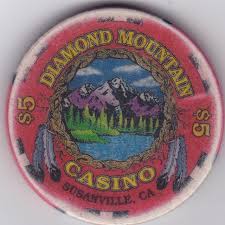History of the Susanville Indian Rancheria
Our Land:
The original 30 acres of the Rancheria were purchased August 15, 1923 under the Landless and Homeless Act, under which the U.S. Congress provided funds to purchase land for landless and homeless California Indians.
On June 6, 1975 Clifton C. Cramer and Betty G. Cramer performed a Quit Claim conveyance of the old Indian Cemetery consisting of .53 acres to the Bureau of Indian Affairs to hold into trust for the Susanville Indian Rancheria. The Bureau of Indian Affairs accepted this conveyance on December 7, 1981.
An additional 120 acres was added to the Rancheria on October 14, 1978 under the special legislation of Public Law 95-459 which was sponsored by the honorable Congressman Bizz Johnson.
Another 80 acres was donated to the Rancheria in 1994 that has not been put in to Federal Trust status.
An additional 72 acres located at the Sierra Army Depot based in Herlong, California was acquired from the U.S. Department of the Army under the Base Realignment and Closure (BRAC) Act and added to the Rancheria on November 6, 2000.
The Susanville Indian Rancheria Housing Authority purchased 3.21 acres on December 30, 2000, transferred the land to the tribe, and the land was accepted into trust status on January 5, 2004.
On March 29, 2002 the tribe purchased an additional 875 acres adjacent to the Upper Rancheria utilizing proceeds from the casino loan from the Marshall Group and this land was accepted into trust status on December 08, 2004.
On September 30, 2003, the tribe purchased 160 acres (the Cradle Valley Ranch) located close to Antelope Lake bringing the total land base to 1,100.74 acres in trust status and 240 acres in fee status.
Our Federal Recognition
The Tribe elected to charter under authority of the Indian Reorganization Act (IRA) of 1934 and thus the initial Rancheria Constitution and Bylaws were approved by the Secretary of the Interior on March 3, 1969.
The anthropological tribes associated with the Rancheria are: Maidu, Paiute, Pit River, and Washoe. The Federal Government, however, through the Department of Interior recognizes political entities and not the anthropological entities.
The original 30-acre parcel was purchased from Mrs. Taylor for the landless and homeless California Indians living in and around the Susanville area. Because there were many landless and homeless Maidu, Paiute, Pit River, and Washoe Indians living in the general Susanville area, the Rancheria land was purchased and considered to have “federal status as a tribe”. The individual Indians from the various named tribes thus became one political, governmental entity with the chartering and approval of its constitution and bylaws by the Secretary of the Interior in 1969.
The Susanville Indian Rancheria, although it is made up of various other tribes, is recognized as a distinct (political) entity from the other tribes who make up the Susanville membership. There is no dual membership allowed in the Susanville Constitution.
The Washoe Tribe is formed and recognized by the Federal Government as the Washoe Tribe of Nevada and California. The eleven small bands’ of the Pit River Indians have formed and is recognized by the Federal Government as the Pit River Nation. The Maidu Tribes are in the process of forming under the recognition process through the Bureau of Indian Affairs. The Susanville Indian Rancheria is acknowledged as the recognized tribe for the Rancheria although there are four anthropological tribes involved, each of which is recognized as political entities. Thus, the Federal Government recognizes only the Susanville Indian Rancheria as the political entity for the Rancheria.
The governing body of the Susanville Indian Rancheria is the General Council, which is composed of all the members who are at least eighteen years old. The General Council has delegated the responsibility of running the day-to-day business of the Rancheria to the Tribal Business Council, which is a seven-member board. The members are elected by the General Council members every three years. The officers of the Tribal Business Council are: Chairman, Vice Chairman and Secretary/Treasurer.
Our Membership
As of June 2016, the Tribe has a voting membership of 731, but including members under the age of eighteen there is a total membership of 1,115 which includes 150 elders (55 years of age and older), 581 adults between 18 and 54 years of age, and 384 minors.
The Tribal Health Program serves over 1,900 Native Americans in Lassen County.
~http://www.sir-nsn.gov/history/ ~
Artist/Author: dm October 8, 2016 | |
